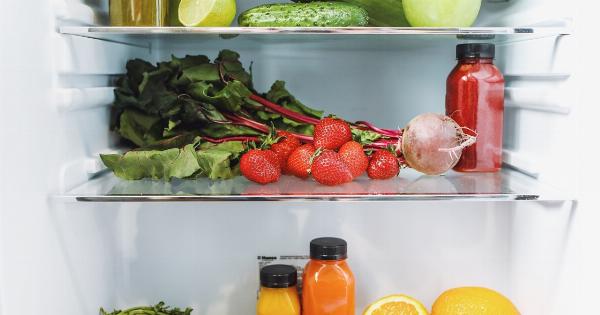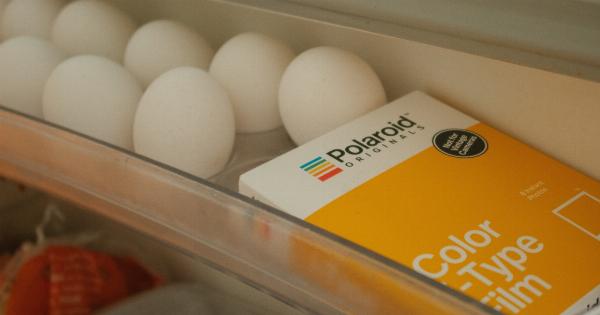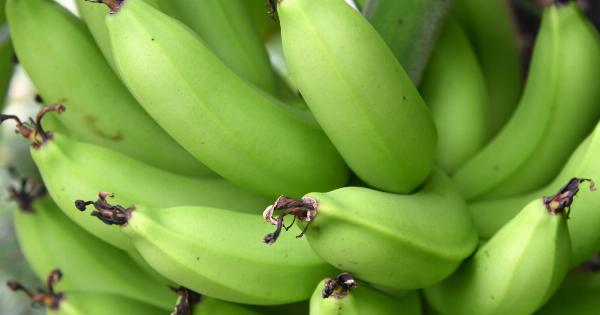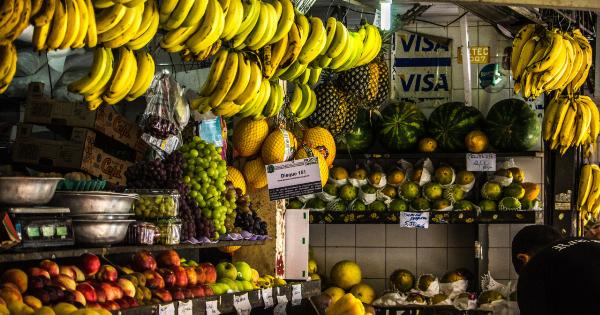Food waste is a global problem that affects millions of people and has significant environmental and economic consequences.
According to the Food and Agriculture Organization (FAO) of the United Nations, about one-third of the food produced worldwide is wasted every year. This waste occurs at various stages of the food supply chain, from production and processing to distribution and consumption.
The importance of reducing food waste
Reducing food waste is crucial for several reasons. Firstly, wasting food means wasting valuable resources such as water, land, and energy that are used to produce, process, and transport the food.
By reducing food waste, we can conserve these resources and minimize our impact on the environment.
Secondly, reducing food waste can help address the issue of food insecurity. Despite the fact that millions of people around the world suffer from hunger, a significant amount of food is wasted.
By preventing food waste, we can redirect the surplus food to those in need, thereby reducing food insecurity and hunger.
The rise of food waste apps
In recent years, innovative solutions have emerged to tackle the issue of food waste. One such solution is the development of food waste apps.
These apps are designed to connect individuals, businesses, and organizations to prevent food waste and facilitate the redistribution of surplus food.
Food waste apps work by allowing users to upload information about excess food they have, whether it’s at home or in a business setting.
This information is then made available to others in the app’s network who might be interested in obtaining the surplus food. By matching the supply and demand of food, these apps help ensure that food does not go to waste and instead reaches those who can benefit from it.
Key features of food waste apps
Food waste apps typically offer a range of features to make the process of preventing food waste more efficient and convenient. Some of the key features include:.
1. Food listings
Users can create listings for surplus food they have, providing details such as the type of food, quantity, expiration date, and location for pickup. This information helps potential recipients assess whether the food is suitable for their needs.
2. Search and filtering options
Users can search for specific types of food or filter listings based on their location or preferences. This feature enables users to find relevant food listings more easily and efficiently.
3. Messaging and communication
Food waste apps often include messaging systems that allow users to communicate with each other. This feature enables users to coordinate the pickup or delivery of surplus food and clarify any questions or concerns before making arrangements.
4. Donations and charity partnerships
Many food waste apps collaborate with charitable organizations or facilitate direct donations to ensure that surplus food reaches those in need. This feature helps create a more sustainable and socially responsible approach to food waste reduction.
5. Feedback and ratings
To improve user experience and maintain a reliable community, some food waste apps incorporate feedback and rating systems.
Users can provide feedback on their experiences with particular listings or users, allowing others to make more informed decisions.
The benefits of using a food waste app
Using a food waste app offers several benefits to both individuals and businesses. Here are some of the key advantages:.
1. Reduce food waste
By using a food waste app, individuals and businesses can actively participate in reducing food waste. Instead of throwing away excess food, they can find someone who can use it efficiently, ensuring that it doesn’t go to waste.
2. Save money
For businesses, reducing food waste means saving money on purchasing new ingredients. Instead of buying more, they can utilize surplus food through a food waste app, effectively cutting down on expenses.
3. Social responsibility
Using a food waste app demonstrates social responsibility by actively addressing the issue of hunger and food insecurity. By redistributing surplus food, individuals and businesses can contribute to creating a more equitable food system.
4. Environmental impact
Reducing food waste also has positive environmental implications. By preventing the waste of resources used in food production, we can decrease greenhouse gas emissions, conserve water, and protect biodiversity.
5. Community building
Food waste apps foster a sense of community by connecting individuals and businesses with shared goals and values. By participating in this collaborative effort, users can contribute to building a more sustainable and interconnected community.
The future of food waste apps
The development of food waste apps has gained momentum in recent years, but their full potential is yet to be realized.
As technology advances and more people become aware of the importance of reducing food waste, we can expect further innovations in this field.
Some possible future developments for food waste apps include:.
1. Integration with food delivery services
Food waste apps could collaborate with popular food delivery services to facilitate the redistribution of surplus food from restaurants and cafes that may not have the resources or infrastructure to handle it.
2. Enhanced tracking and analytics
By incorporating tracking and analytics features, food waste apps can provide valuable data on food waste patterns and trends.
This information can help businesses and policymakers make more informed decisions regarding food production, distribution, and waste management.
3. Gamification
Introducing gamification elements can increase user engagement and motivation to reduce food waste. Rewards and challenges can encourage individuals and businesses to actively participate in preventing food waste.
4. Collaboration with government initiatives
Food waste apps can partner with government initiatives and programs aimed at reducing food waste. This collaboration can help streamline efforts and create a more coordinated approach to tackling the global issue of food waste.
Conclusion
The development of food waste apps provides a promising solution to the ongoing problem of food waste. By connecting individuals, businesses, and organizations, these apps help prevent excess food from going to waste and ensure it reaches those in need.
Using a food waste app not only benefits the environment and reduces food waste but also promotes social responsibility and community building. As technology continues to advance, the potential for food waste apps to make a significant impact on reducing food waste is immense.






























